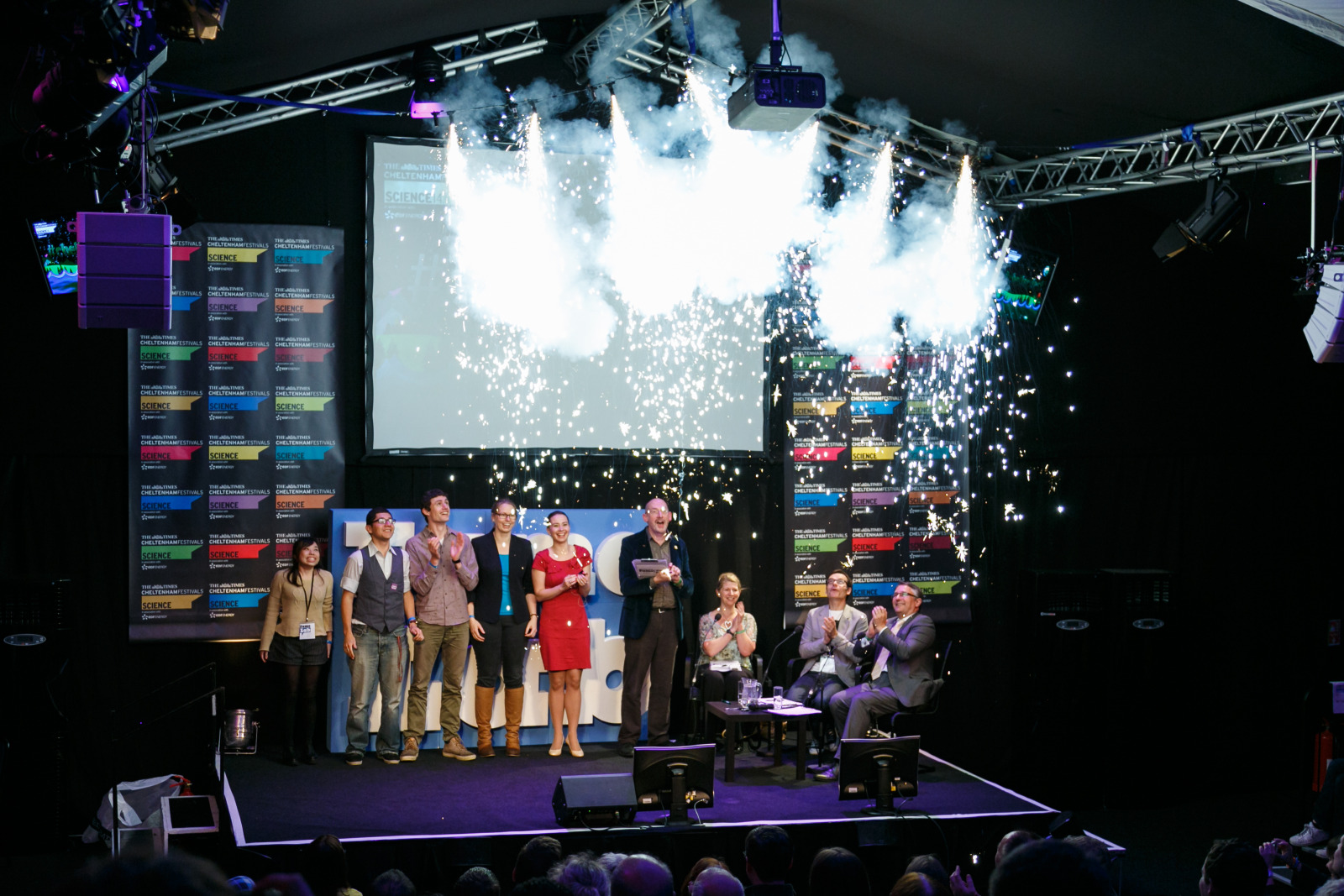FameLab: DNA Sequencing
Interview with
In Cambridge, scientists are battling it out in an effort to become the city's FameLab champion. Six finalists have been chosen by a panel of judges and they're set to go head to head on 9th March 2015 at the Cambridge Junction. Between now and then, we'll be hearing one each week. First up was Kerstin Göpfrich and she told Chris Smith about her work on DNA sequencing...
city's FameLab champion. Six finalists have been chosen by a panel of judges and they're set to go head to head on 9th March 2015 at the Cambridge Junction. Between now and then, we'll be hearing one each week. First up was Kerstin Göpfrich and she told Chris Smith about her work on DNA sequencing...
Kerstin - I'm a PhD student at the Cavendish Laboratory. That's the department of physics of the University of Cambridge. That is actually where Watson and Crick discovered the structure of the DNA about 60 years ago. Actually in my lab, we're also working with DNA.
Chris - And so, it's entirely relevant that your 3-minute piece is going to be on how we read the sequence of DNA.
Kerstin - Yes. I believe as a scientist that it's my duty to make people aware of a technology which I believe will have a big impact on our lives in the very near future. We as scientists, we can only deliver tools but we have to decide as a society on how we want to use them. This is why I believe information is the key and I want to make people aware of what is the state of the art of DNA sequencing.
Chris - Right. the rules of FameLab, you get 3 minutes and we're going to time you. We're going to give you your 3 minutes. Kerstin Göpfrich, your time on DNA sequencing starts now...
Kerstin - DNA is the molecule that stores the information of life, a molecule that can copy itself. Surely, the greatest invention of nature and actually, the reason we're all here today. Volumes of history are written in the ancient alphabet of A and T, C and G, stories of the present and past that we're just starting to decipher. And that is where DNA sequencing comes in. DNA sequencing means decoding the information of life, reading the 3 billion letters of the human genome. That is a lot of information. The Naked Scientists would have to broadcast continuously day and night for a hundred thousand years before they will have broadcasted 3 billion podcasts.
So why do we even bother? We scientists believe that by sequencing DNA, we can give the right drug to the right patient. We can help to cure a disease before we even suffer from the symptoms. That is why we started the human genome project.
It took 150 scientists 13 years and $3 billion to decode one single human genome. That was back in 2003. Sequencing for everyone? Certainly not. But what if we could do it in under 10 minutes using a small device like this one, like this USB stick for under a thousand dollar? Well, this might be possible using a technique called nanopore sequencing which is pioneered by our collaborators, Oxford Nanopore. Actually, the "thousand-dollar genome" became the catchphrase for the sequencing industry. It was last year that Illumina, the sequencing giant, announced that they can actually sequence a genome for less than 1,000 dollar.
You may believe that computers have developed that unprecedented speed, but that's nothing compared to DNA sequencing. Computing power has doubled every 2 years, but the speed and the cost of DNA sequencing has dropped by a factor of 100,000 in just a decade. To me, that is overwhelming but there's not much time to be overwhelmed because we are facing a new reality. Do we want to predict our future with DNA sequences? Do we want to accept that we are fat because we have the couch potato gene? DNA stands for, Do Not Abuse, Do Not Alter, or Dignity Needs Awareness.
Let's be aware of what is out there. Let's be aware that DNA sequencing is at our fingertips and it has the power to change our lives in a good and in a bad way. This is why I would like to invite everyone to contribute to achieve sensible guidelines for our future.










Comments
Add a comment